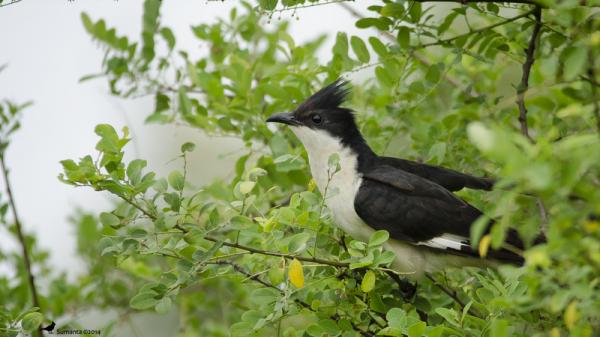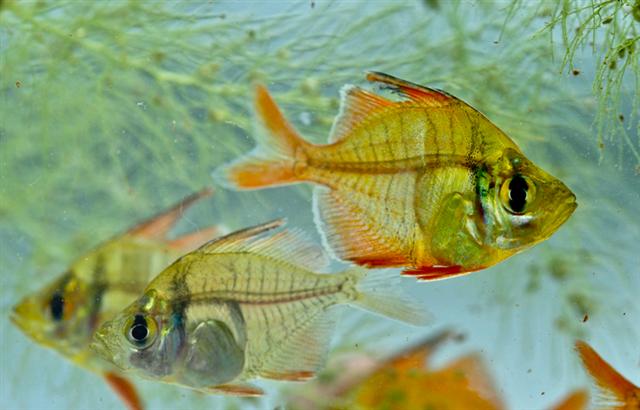BIOTOPE: Shyamkhola Lake, West Bengal
Overview: This area to the south of Narendrapur, and almost adjoining it, in Dingelpota, consists of villages with dense orchards, a mixture of natural and planted vegetations, open croplands and ponds of different sizes. It also has a large wetland that was created owing to removal of soil from croplands for brickfields. There are several bamboo groves which attract many birds. When the trees are in flower, or with fruit, many frugivorous and nectar eating birds as well as butterflies and even few mammals
congregate; this is unique to the place. The small and medium ponds and a few large pools have created a serene and very interesting biotope.
Threat: Residential buildings are coming up replacing the greenery.
Orchards are being converted into small factories or workshops disturbing the tranquility the area. Though it is very rich in its flora and fauna at present, with all its threats, what would remain here in near future is a very big question.
How to Reach: Nearest most popular place is Garia. Buses and auto-rickshaws are available from Garia. Buses or taxies from Sealdah or Howrah Railway station to Garia are enough. Hiring a auto or taxi from Garia to reach Rajpur kalitola takes 10-15 minute. From there, take an
auto on the right lane to reach Shyamkhola auto stand. From there you can reach the destination in 5 mins by walk.
Lodging: There is no hotel as such to stay there one can approach the locals to staying in their houses. For lunch or dinner contact the local sweet sellers in advance.
WATER: pH 6-7.5, dH: 8-10, 75-86 F (24-30 C). Specific Gravity - 1.000
TANK : Tank with heavy lighting and planting. Substrate can be small gravels either or without sand/clay bed. Driftwood, Bamboo sticks, stones can be used to give it a natural look. Even waste products like earthen pottery’s can be stacked at the bottom which act as a natural shelters for small fishes and bottom dwelling loaches.
Filter: One never regrets the money spent on a good filter – so take a little time deciding which kind you want, and get the best you can afford that suits your needs. There are a lot of different filter types available, but hanging filters and canister filters are the most common styles. They will both siphon
water out, run it through filtration media and return it to the tank. Neither filtering system is challenging to maintain; it will just come down to personal choice and cost.
FLORA: Vallisneria , Hygrophilla polysperma, Anacharis, Hydrilla, Potamogeton sp., Saggittaria, Najas Indica, etc.
FAUNA: Zebrafish (Danio rerio), Onespot Barb (Puntius terio), Olive barb (Puntis sarana), Dwarf Gourami (Colisa
laila), Highfin Glassy Perchlet (Parambassis lala), Indian
glass perch (Parambassis ranga), Giant Danio( Devario aequipinnatus), Half beak (Dermogenys pusilla), Freshwater Needlefish (Xenentodon cancilla), etc are very much common.
Also shrimps as Ghost shrimp (Palaemonetes sp.), Macrobrachium sp. dwarf, and also Malaya shrimp are pretty much common in this area.
Overview: This area to the south of Narendrapur, and almost adjoining it, in Dingelpota, consists of villages with dense orchards, a mixture of natural and planted vegetations, open croplands and ponds of different sizes. It also has a large wetland that was created owing to removal of soil from croplands for brickfields. There are several bamboo groves which attract many birds. When the trees are in flower, or with fruit, many frugivorous and nectar eating birds as well as butterflies and even few mammals
congregate; this is unique to the place. The small and medium ponds and a few large pools have created a serene and very interesting biotope.
Threat: Residential buildings are coming up replacing the greenery.
Orchards are being converted into small factories or workshops disturbing the tranquility the area. Though it is very rich in its flora and fauna at present, with all its threats, what would remain here in near future is a very big question.
How to Reach: Nearest most popular place is Garia. Buses and auto-rickshaws are available from Garia. Buses or taxies from Sealdah or Howrah Railway station to Garia are enough. Hiring a auto or taxi from Garia to reach Rajpur kalitola takes 10-15 minute. From there, take an
auto on the right lane to reach Shyamkhola auto stand. From there you can reach the destination in 5 mins by walk.
Lodging: There is no hotel as such to stay there one can approach the locals to staying in their houses. For lunch or dinner contact the local sweet sellers in advance.
BIOTOPE INFORMATION
WATER: pH 6-7.5, dH: 8-10, 75-86 F (24-30 C). Specific Gravity - 1.000
TANK : Tank with heavy lighting and planting. Substrate can be small gravels either or without sand/clay bed. Driftwood, Bamboo sticks, stones can be used to give it a natural look. Even waste products like earthen pottery’s can be stacked at the bottom which act as a natural shelters for small fishes and bottom dwelling loaches.
water out, run it through filtration media and return it to the tank. Neither filtering system is challenging to maintain; it will just come down to personal choice and cost.
FLORA: Vallisneria , Hygrophilla polysperma, Anacharis, Hydrilla, Potamogeton sp., Saggittaria, Najas Indica, etc.
FAUNA: Zebrafish (Danio rerio), Onespot Barb (Puntius terio), Olive barb (Puntis sarana), Dwarf Gourami (Colisa
laila), Highfin Glassy Perchlet (Parambassis lala), Indian
glass perch (Parambassis ranga), Giant Danio( Devario aequipinnatus), Half beak (Dermogenys pusilla), Freshwater Needlefish (Xenentodon cancilla), etc are very much common.
Also shrimps as Ghost shrimp (Palaemonetes sp.), Macrobrachium sp. dwarf, and also Malaya shrimp are pretty much common in this area.











hi can you identify the exact potagometon species ?
ReplyDeleteWhat are birds can be sighted there,Does Giude is available
ReplyDeleteHi Mate, wonderful writeup on my 2nd home. I am in love for this place since I discovered the lovely underwater fauna the lake consists. I would like to point out that some species like half beak, zebra danio & giant danio are not present in the lake. What might you have seen Salmophasia phulo. Anyways the species are all most getting hard to find now. Good luck
ReplyDeleteNitish
ReplyDeleteNitish Kumar
ReplyDelete